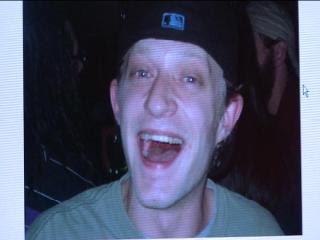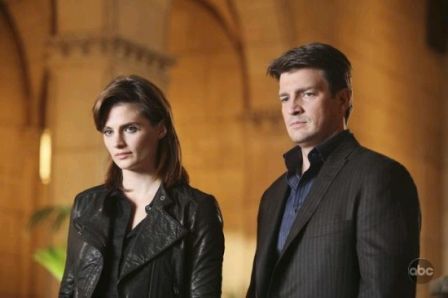Forty-eight people have died so far this year after being shot with Tasers. Many of these incidents began as minor, somewhat routine police calls, but quickly escalated to very dangerous situations. Officers have mere seconds to react in these situtions, if that long, and the wrong decision can have devastating consequences for everyone involved. Sometimes making the right decision doesn’t work out very well, either.
Matthew Bolick, pictured above, is the latest person to die after experiencing the 50,000 volts of a police officer’s Taser. Bolick’s father called police asking for help with his thirty-year-old son who had been acting strangely. When police arrived, Bolick assaulted one of the officers on the front lawn. The officer deployed his Taser, but it had no effect on Bolick who then ran inside the home. Officers followed the suspect inside and again deployed their Tasers several more times. Bolick died at the scene.
Many of the the other forty-seven deaths began with something as simple as a playing music too loudly. See for yourself…
1. Jan 9, 2009: Derrick Jones, 17
Martinsville, Virginia
Initial complaint – Police were called to Jones’ home because of a loud noise complaint from neighbors. Jones died in his home after being shot with a police Taser.
2. Jan 11, 2009: Rodolfo Lepe, 31
Bakersfield, California
Initial complaint – Family members called police because Rodolfo was exhibiting odd and bizarre behavior. Lepe died at the hospital after being shot with a police Taser.
3. Jan 22, 2009: Roger Redden, 52
Soddy Daisy, Tennessee
Initial complaint – unknown
4. Feb 2, 2009: Garrett Jones, 45
Stockton, California
Initial complaint – unknown
5. Feb 11, 2009: Richard Lua, 28
San Jose, California
Initial complaint – unknown
6. Feb 13, 2009: Rudolph Byrd, 37
Thomasville, Georgia
Initial complaint – Byrd had been in an auto accident and was disoriented. He was also bleeding from several lacerations. The responding police officer found cocaine at the scene and attempted to arrest Byrd, who then became combative. The officer deployed his Taser, attempting to stop the threat. Byrd stopped breathing and was pronounced dead at the hospital.
7. Feb 13, 2009: Michael Jones, 43
Iberia, Louisiana
Unknown
8. Feb 14, 2009: Chenard Kierre Winfield, 32
Los Angeles, California
Unknown
9. Feb 28, 2009: Robert Lee Welch, 40
Conroe, Texas
Unknown
10. Mar 22, 2009: Brett Elder, 15
Bay City, Michigan
Unknown
11. Mar 26, 2009: Marcus D. Moore, 40
Freeport, Illinois
Moore, a wanted fugitive, fought with police when they attempted to apprehend him. Officers deployed their Tasers to help effect the arrest and Moore soon began to complain of shortness of breath. He was pronounced dead upon arrival at the hospital.
12. Apr 1, 2009: John J. Meier Jr., 48
Tamarac, Florida
Unknown
13. Apr 6, 2009: Ricardo Varela, 41
Fresno, California
Unknown
14. Apr 10, 2009: Robert Mitchell, 16
Detroit, Michigan
Mitchell, who weighed 110 pounds and stood 5’2″ tall at the time of arrest, was in custody and undergoing a pat down search by police when a struggle began. The officer deployed his Taser and the boy died. Autopsy results revealed the boy had a heart condition that, when aggravated by the Taser blast, caused the death.
15. Apr 13, 2009: Craig Prescott, 38
Modesto, California
Prescott, a jail inmate, struggled with deputies who deployed Tasers. The coroner ruled that it was the physical exertion from the struggle that killed Prescott, not the Taser.
16. Apr 16, 2009: Gary A. Decker,
Tuscon, Arizona
Initial complaint – loud noise
17. Apr 18, 2009: Michael Jacobs Jr., 24
Fort Worth, Texas
Initial complaint – Parents called police to assist with controlling their mentally impaired son.
18. Apr 30, 2009: Kevin LaDay, 35
Lumberton, Texas
Initial complaint – DUI traffic stop. LaDay ran and was shot with a Taser.
19. May 4, 2009: Gilbert Tafoya, 53
Holbrook, Arizona
Unknown
20. May 17, 2009: Jamaal Valentine, 27
La Marque, Texas
Police found Valentine rolling in a ditch. They deployed their Tasers and the subject died. Autopsy revealed a controlled substance in Valentine’s system.
21. May 23, 2009: Gregory Rold, 37
Salem, Oregon
Initial complaint – trespassing.
22. Jun 9, 2009: Brian Cardall, 32
Hurricane, Utah
Cardell’s wife called 911 asking for help with her husband who was experiencing a psychotic episode. Cardell was being treated and medicated for his condition. Here’s the wife’s 911 call.
This is actual police audio from the scene. It begins with the officer saying, “I’m 23…” That’s short for 10-23, meaning he has arrived on the scene. Listen as he fires his Taser at the man who is clearly distraught. Then you’ll hear the officers begin to notice that the man is not breathing and has no pulse.
23. Jun 13, 2009: Dwight Madison, 48
Bel Air, Maryland
Initial complaint – Homeless man knocking on doors looking for a friend.
24. Jun 20, 2009 Derrek Kairney, 36
South Windsor, Connecticut
Unknown
25. Jun 30, 2009, Shawn Iinuma, 37
Fontana, California
Unknown
26. Jul 2, 2009, Rory McKenzie, 25
Bakersfield, California
Unknown
27. Jul 20, 2009, Charles Anthony Torrence, 35
Simi Valley, California
Unknown
28. Jul 30, 2009, Johnathan Michael Nelson, 27
Riverside County, California
Unknown
29. Aug 9, 2009, Terrace Clifton Smith, 52
Moreno Valley, California
Unknown
30. Aug 12, 2009, Ernest Ridlehuber, 53
Greenville, South Carolina
Initial complaint – Ridlehuber’s family reported him as a missing person.
31. Aug 14, 2009, Hakim Jackson, 31
Philadelphia, Pennsylvania
Unknown
32. Aug 18, 2009, Ronald Eugene Cobbs, 38
Greensboro, North Carolina
Scuffle with deputies inside the local jail.
33. Aug 20, 2009, Francisco Sesate, 36
Mesa, Arizona
Unknown
34. Aug 22, 2009, T.J. Nance, 37
Arizona City, Arizona
Unknown
35. Aug 26, 2009, Miguel Molina, 27
Los Angeles, California
Unknown
36. Aug 27, 2009, Manuel Dante Dent, 27
Modesto, California
Dent swallowed a bag of methamphetamine to prevent police officers from retrieving it as evidence. An officer then placed a Taser in direct contact with Dent’s skin and fired. Dent died hours later, but autopsy results indicated that the meth he’d ingested was the cause of death, not the Taser blast.
37. Sep 3, 2009, Shane Ledbetter, 38
Aurora, Colorado
38. Sep 16, 2009, Alton Warren Ham, 45
Modesto, California
Initial complaint – Home invasion/robbery. Ham became combative with jailers so they used a Taser to get him under control. He died immediately after being shot. Autopsy results indicated that Ham had an enlarged heart.
39. Sep 19, 2009, Yuceff W. Young II, 21
Brooklyn, Ohio
Unknown
40. Sep 21, 2009, Richard Battistata, 44
Laredo, Texas
Initial complaint – Burglary in progress. Battistata was confronted by police as a burglary suspect. The officer deployed her Taser and the suspect died on the scene. Autopsy results indicated that the suspect died as a result of a cocaine overdose.
41. Sep 28, 2009, Derrick Humbert, 38
Bradenton, Florida
Initial complaint – Officer stopped Humbert for riding a bicycle after dark without a headlight.
42. Oct 2, 2009, Rickey Massey, 38
Panama City, Florida
Initial complaint – Possession of cocaine
43. Oct 12, 2009, Christopher John Belknap, 36
Ukiah, California
Unknown
44. Oct 16, 2009, Frank Cleo Sutphin, 19
San Bernadino, California
Initial complaint – Fight call
45. Oct 27, 2009, Jeffrey Woodward, 33
Gallatin, Tennessee
Unknown
46. Nov 13, 2009, Herman George Knabe, 58
Corpus Christi, Texas
Initial complaint – Man riding a bicycle against the flow of traffic.
47. Nov 14, 2009, Darryl Bain, 43
Coram, New York
Initial Complaint – Bain’s brother called police asking for help because Bain was high on cocaine.
48. Nov 16, 2009, Matthew Bolick, 30
East Grand Rapids, Michigan
Initial complaint – Bolick’s father called police because he was concerned about his son’s odd behavior.
Bolick family home
*List and images compiled by Eletronic Village.
* * *
Castle News – Alyssa Milano has been cast to play the part of Castle’s ex-lover. Me thinks an even newer character will follow in the “Charmed One’s” footsteps – the Green-eyed Monster. Beckett’s not going to like this…not at all.
* * *
Writers Police Academy
Registration is officially open!
Please visit us at www.writerspoliceacademy.com to reserve your spot at this unique event now.
Space is limited!
You’ll have the opportunity to see Taser use and its effects at the academy because we’re featuring actual Taser demos. Pepper spray, too.
I’m very pleased with the early response to the academy. We’ve been steadily receiving reservations from all across the country and Canada.
Remember, the hotel also has limited space due to other large events in the area. Please register early!
See you there.





































